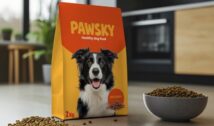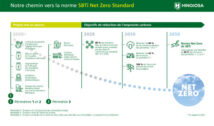
As it’s announced that Mars bars will move from plastic to paper-based packaging, we look at how paper is gradually taking over the sustainable packaging industry.
In a significant development for the paper packaging industry, one of the world’s biggest confectionary companies is converting the packaging for its most popular chocolate bars to recyclable, paper-based packaging. Mars Wrigley announced plans to move from plastic to paper-based packaging for its Mars, Snickers and Milky Way brands following three years and AUS $2.5 million-worth of intense research and development, and will begin rolling out the new packaging in Australia in April 2023.
“The transition to paper-based packaging for our locally made chocolate bars marks a significant milestone in our sustainability journey,” said Andrew Leakey, General Manager of Mars Wrigley Australia. “Mars’s ongoing investment in local R&D has allowed us to be agile and create solutions that have a positive impact on our environment, meet our stringent quality and food safety standards but are also convenient for our consumers to recycle via curbside recycling.”
The move is part of a $1bn investment by parent company Mars, Inc to tackle climate change, poverty in the value chain, and scarcity of resources, and comes after a number of other confectionary brands, including Quality Street, KitKat and Ferrero Rocher, have converted their packaging to a more recyclable alternative.
Paper More Sustainable For Takeaways
Another recent boost for paper-based packaging came in the form of a report by the European Paper Packaging Alliance (EPPA), which found that single-use, paper-based packaging is more sustainable than reusable packaging for delivered food.
The new lifecycle analysis study shows that recyclable, paper-based packaging used in the food delivery and takeaway sector offers a number of key environmental advantages over reusable systems across 12 ‘impact categories’, including climate change, freshwater consumption, and resource depletion.
EPPA say that transporting food and beverage containers back to restaurants after use, together with washing and drying them hygienically, consumes more energy, water and resources. Switching to reusable alternatives would generate 48% more CO2-equivalent emissions, consume 39% more freshwater, and demand 82% more mineral and resource extraction
A Satisfying Shift
The increasing amount of reports showing the positive benefits of paper packaging coupled with huge global brands such as Mars and Snickers making the shift from plastic to paper packaging will not only drastically reduce the amount of plastic in the waste stream, but encourage other food brands to follow suit.
It seems that all around the world there is a genuine desire at all levels of business to eradicate as much plastic as possible in our packaging, and paper has already proven itself to be a successful alternative.
For more information on EPPA and its lifecycle analysis of food packaging, go to https://eppa-eu.org

































